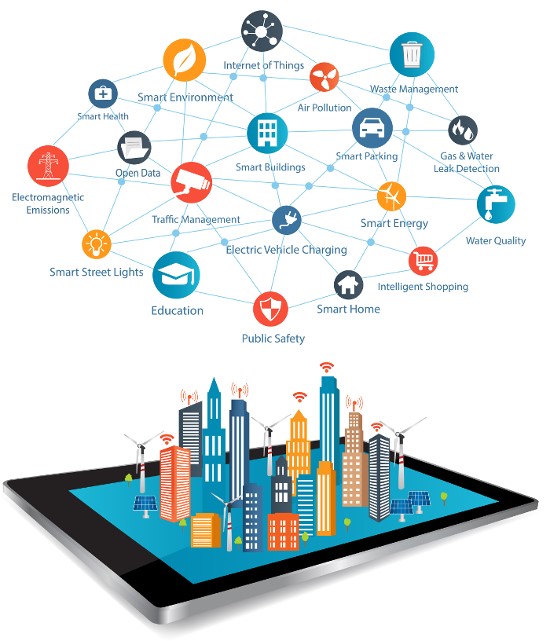
Role of Network Monitoring in Smart Cities Development
Smart City makes life easier for city management teams. Things which used to require an on-field inspection can now be done remotely from a comfortable office desk. Numerous tasks are being done automatically without requiring an IT specialist’s attention and time. All this contributes to better time and city infrastructure management.
A 2015 “Securing Smart Cities” report projects that Smart City’s development costs will triple in the next 5 years, up to $1.135 trillion dollars in 2019, compared to the previously mentioned $311 billion dollars in 2014. Such a rapid pace of development puts a lot of pressure on the software tools used to manage and monitor these cities. Software developers must push their limits to bring the best, most intuitive, capable and reliable software as a result.
Significance of Network Monitoring
In order to entice and retain people, ensure safety of residents, smart cities should have a smart technology backbone to make sure that it isn’t just suitable for the current capacity needs, but also to deliver a transparent & a sustainable roadmap for the future that’ll improve smart city life over the years to come.
It should’ve the potential to inter-connect & support municipal services such as smart street lights, traffic systems, public safety systems, electricity services, CCTV cameras, and water services though a smart network.
While this network infrastructure addresses the digital divide of residents and creates social benefits that can ultimately improve the overall economy. IT infrastructure plays a key role in smart-city projects, thus managing & monitoring it makes it even more crucial.
However, with an inefficient overlooked network management system, municipalities might face difficulties to deliver on the promise of keeping everyone connected and smart city systems humming.
Ultimately, the smart infrastructure should ideally be a network of networks which has the best -of-breed smart technology with unified network management – which will give visibility, reduce costs and enable a reliable network infrastructure service & operations.
Significance of Network Management System

Benefits of NMS for Smart Cities
With all of these IT infrastructure elements in play, the glue that enables a smart city is a network management software (NMS) which can integrate with disparate network elements and allows information flow between the systems.
The benefits of a unified network monitoring software include:
- Ensure data-sharing across disparate network elements & platforms;
- Improved IT services efficiency by allowing information flow across systems;
- Enhanced cybersecurity with log management & vigilant system
- Ensure public safety by monitoring CCTV/ video/ any surveillance solutions;
- Maximize availability of IT services through a reliable IT infrastructure; and
- Reduce operational costs by smart infrastructure monitoring & management.
Motadata for 12+ Smart Cities
Presently, 6 smart cities are embracing the end-to-end pre-integrated product suite from monitoring to service assurance while 6+ are in the implementation phase.
With Motadata’s network management & log management solution, the IT admins of smart city projects monitor & manage their entire IT infrastructure including network elements, servers, Firewall, applications, database, network traffic, router, switches, CCTV, sensors, PA systems etc. from a unified dashboard.
Some of the key features implemented in these projects:
- Monitoring the performance, availability, utilization, memory, etc. of all the devices
- Monitoring network spread across the city from one central location
- Facility to receive information to & from various 3rd party systems
- Ability to provide performance data to external systems
- Interface with fault management system
- Customized dashboards as per user hierarchy
- Executive-level visibility into IT and business operations
- Integration with Helpdesk System for automated incidents reporting
- Service Level Management
- Technology / vendor agnostic solution – Future ready
- Easily interoperate with 3rd party systems
“Motadata provided the scalability to Monitor N number of devices (both existing & future) through a unified dashboard. Moreover, it’s Vendor/ Access/Device and Network Agnostic platform seamlessly integrates with any 3rd party system seamlessly.” – A leading Smart City of Gujarat
Smart-city initiatives by the Ministry of Urban Development turns municipalities into the smartly networked organisms for the future, brings new opportunities and fosters the collaboration between local government bodies and the city residents. With the smart IT infrastructure choices that we make, it impacts the connection between all networks and applications, while it allows better & holistic management, scalability and capacity control. Smart cities can improve their quality of life, making municipal services more reliable, efficient, and promotes job opportunities — everything while reducing IT operational costs.


